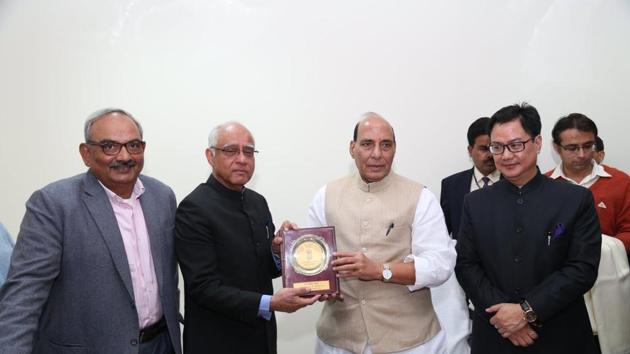India’s revamped security set-up gets IPS, intelligence influx
India’s national security establishment was re-structured on the recommendation of a task force headed by KC Pant during the Atal Bihari Vajpayee government.
The recent appointment of Rajinder Khanna, a former chief of the country’s external intelligence agency, Research and Analysis Wing (R&AW), as Deputy National Security Advisor reflects the march of specialists, especially those from the Indian Police Service in the country’s national security establishment, which has, over the past two years, grown in significance, been given more resources, and now occupies a significant part of Sardar Patel Bhavan in the heart of the national capital.

The appointment of Khanna, considered a specialist on Bangladesh, Myanmar and Pakistan is a break from the precedent of making a diplomat the deputy NSA, if the NSA is from the IPS.
Still, his appointment is in keeping with the direction the National Security Council Secretariat (NSCS) has taken under NSA Ajit Doval who has surrounded himself with specialists, mostly with a background in the IPS.
Dineshwar Sharma, a former Intelligence Bureau chief, is now the government’s interlocutor on Jammu and Kashmir; Syed Asif Ibrahim, another former IB chief, is now special envoy on counter-terrorism and extremism in the NSCS; former R&AW special secretary AB Mathur is a member of the National Security Advisory Board (NSAB), which is a subsidiary body of the NSCS and also the government’s interlocutor on North-East insurgent group Ulfa; Alok Joshi, a former R&AW chief, is now chairman of the technical intelligence gathering agency National Technical Research Organisation (NTRO); SC Jha, a former IB special director and counter-terrorism expert, is now deputy to Alok Joshi in the NTRO; Amitabh ‘Tony’ Mathur, a former R&AW special secretary, is an advisor on Tibetan affairs in the home ministry; and RN Ravi, a former IB special director and expert on North-East who now heads the Joint Intelligence Committee (JIC), a subsidiary body of the NSCS tasked with assessment of intelligence gathered by various intelligence agencies.
Rounding off the list are PS Raghvan, a former career diplomat who served as Indian ambassador to Russia, who heads NSAB, and Lt Gen (retired) SL Narasimhan, a member of the NSAB who is considered an expert on China.
“It is beneficial to have a specialist on the job. As R&AW chief, Alok Joshi was a consumer of intel gathered by the NTRO and when he became its chairman, he knew exactly what is expected of the NTRO by the IB or R&AW,” says Ajit Lal, a former JIC chief.
Most of these officers sit in Sardar Patel Bhawan where NSA Doval also has an office (he has another in the Prime Minister’s Office). Doval is the second former IPS officer to be the NSA after M K Narayanan. An indication of a bigger role for the NSCS came from the last budget when finance minister Arun Jaitley made a budgetary allocated of Rs 333.58 for it, almost 10 fold jump from Rs 33.17 crore provided to it in 2016-17 budget.
India’s national security establishment was re-structured on the recommendation of a task force headed by KC Pant during the Atal Bihari Vajpayee government.
Following its recommendations, a three-tier structure was set up which included a National Security Council, headed by Prime Minister, a Strategic Policy Group and a National Security Advisory Board.
The PM-headed NSC is the apex body and the National Security Advisor works as its secretary. The Strategic Policy Group is headed by the Cabinet Secretary and it has the chiefs of the armed forces, the Intelligence Bureau and the Research and Analysis Wing as its members. The group is responsible for policy-making and for follow up action in matters of national security. The advisory board does long term analysis and provides perspectives on issues of national security.





